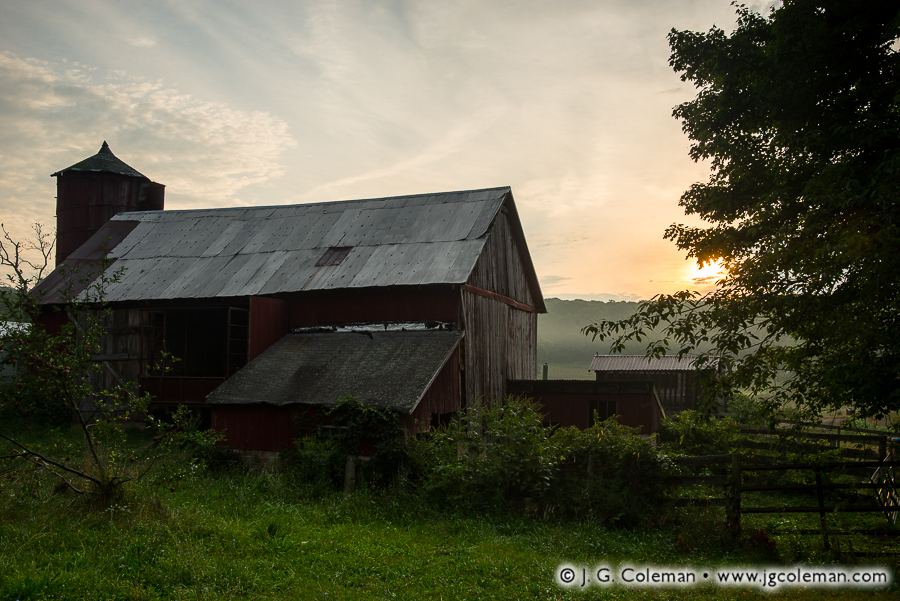
Old barns at dawn, Durham, Connecticut
© 2015 J. G. Coleman
Faint clouds cling to hills and pastures of the Coginchaug River Valley in Central Connecticut. Warm, morning sunlight struggles to permeate the heavy air over a complex of old barns and sheds clad with weathered planks and crowned by sheet metal and shingles. Nestled into the buildings is a cozy barnyard, bound by split-rails and cloaked in shadow beneath a shade tree.
Throughout most of Southern New England’s agricultural past, barn roofs were dressed with wooden shingles. Self-reliant farmers of that era could hand-split these shingles, or “shakes”, off logs harvested from their woodlot, thus eliminating the need to buy anything besides the necessary fasteners. With only a few exceptions, wooden shingles were the perfect solution in those early days, providing a durable, homemade roof which could potentially last two or three decades.
Perhaps the only glaring difficulty presented by wooden shingles was the simple fact that they were highly flammable. Fire could quickly lay waste to timber-framed barns and roofs clad in wood only hastened the destruction. For that matter, farm houses were oftentimes roofed with the same wooden shingles as their companion barns, so if either structure caught fire, all it may have taken was a few stray embers to set the other building ablaze.
Alternatives to the wooden shingle such as metal barn roofing, often in the form of corrugate sheets, didn’t arise until the late 1800s and grew in popularity after the turn of the century. Northern New Englanders, possibly owing to their harsher winters, adopted metal roofing a bit more readily more than their neighbors in Southern New England who instead tended to favor slightly less resilient asphalt shingles.
In “Yankee Farmlands № 37” (above), we see a range of roofing materials that have likely been applied as needed throughout the decades. The largest barn is capped with old, wavy tin sheeting, while a small shed on the perimeter of the barnyard sports a more modern steel roof with patterned ribs. Asphalt shingles have also managed their way into the mix, covering the addition beside the large barn and even capping the old silo.
Purchase a Fine Art Print or Inquire About Licensing
Click here to visit my landing page for “Yankee Farmlands № 36” to buy a beautiful fine art print or inquire about licensing this image.
Want to See More?
Be sure to check out all of my work from the on-going Yankee Farmlands collection.

